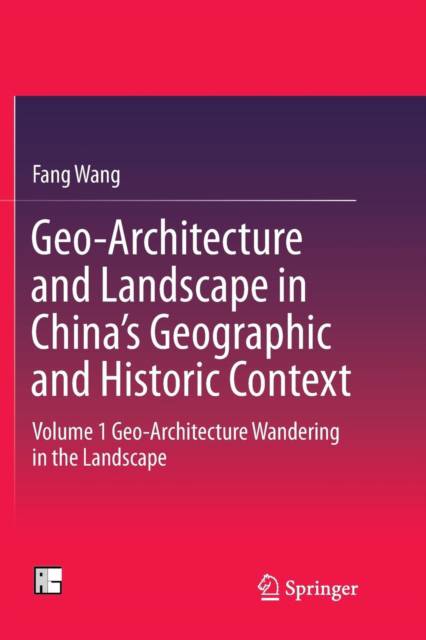
- Retrait gratuit dans votre magasin Club
- 7.000.000 titres dans notre catalogue
- Payer en toute sécurité
- Toujours un magasin près de chez vous
- Retrait gratuit dans votre magasin Club
- 7.000.0000 titres dans notre catalogue
- Payer en toute sécurité
- Toujours un magasin près de chez vous
Geo-Architecture and Landscape in China's Geographic and Historic Context
Volume 1 Geo-Architecture Wandering in the Landscape
Fang Wang
Livre broché | Anglais
83,95 €
+ 167 points
Format
Description
This book analyzes forms of architectures within the frame concept of geo-architecture, and looks into the interaction of architecture and its environment. It starts by discussing the collisions between architecture and geography, humanity, as well as other architectures and reflects on the ancient Chinese notion of emotional relief and expression through natural landscape. It then studies important transportation and scenic routes, like pavilions, towers, clan halls and villages within architectural systems. It also discusses the forms of geographic integration and isolation expressed through architecture, which reflects their historical and cultural context.This book is the first of a 4-volume book series. The series develops the innovative concept of "geo-architecture" by exploring the myriad influences of natural, human and historical factors upon architecture. These influences are considered in three categories, namely, interaction between architecture and nature, interactionbetween architecture and its human users and change in architecture over time--each category serves as a lens. Augmenting these lenses is the Time-Person-Place concept applied different geographic. The analysis ultimately focuses on two aspects: geographic influence on architecture and architectural response to geography. The over 1000 pictures of case architectures enriches the study with stunning and unique visual angles.
"This unprecedented work will be a unique and valuable contribution to the literature. Integrating as it does the disciplines of architecture, landscape architecture, and geography, Wang Fang's voice is original, compelling, and will be much appreciated by English-speaking readers (and inside China, too, I can only imagine.)"
Stephen M Ervin Assistant Dean Graduate School of Design, Harvard University July 2nd, 2013
"One reason for why there would be interest is because her research would fill some significant gaps in the literature.What is novel about Dr. Wang's series is that she further extends this intellectual project of looking at Chinese architecture through Chinese eyes, by taking it one provocative step further."Annette M. Kim Associate Professor Department of Urban Studies and Planning, M.I.T. July 1st, 2013
"This unprecedented work will be a unique and valuable contribution to the literature. Integrating as it does the disciplines of architecture, landscape architecture, and geography, Wang Fang's voice is original, compelling, and will be much appreciated by English-speaking readers (and inside China, too, I can only imagine.)"
Stephen M Ervin Assistant Dean Graduate School of Design, Harvard University July 2nd, 2013
"One reason for why there would be interest is because her research would fill some significant gaps in the literature.What is novel about Dr. Wang's series is that she further extends this intellectual project of looking at Chinese architecture through Chinese eyes, by taking it one provocative step further."Annette M. Kim Associate Professor Department of Urban Studies and Planning, M.I.T. July 1st, 2013
Les avis
Nous publions uniquement les avis qui respectent les conditions requises. Consultez nos conditions pour les avis.







